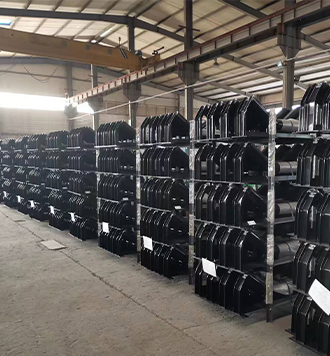 Afrikaans
Afrikaans  Albanian
Albanian  Amharic
Amharic  Arabic
Arabic  Armenian
Armenian  Azerbaijani
Azerbaijani  Basque
Basque  Belarusian
Belarusian  Bengali
Bengali  Bosnian
Bosnian  Bulgarian
Bulgarian  Catalan
Catalan  Cebuano
Cebuano  Corsican
Corsican  Croatian
Croatian  Czech
Czech  Danish
Danish  Dutch
Dutch  English
English  Esperanto
Esperanto  Estonian
Estonian  Finnish
Finnish  French
French  Frisian
Frisian  Galician
Galician  Georgian
Georgian  German
German  Greek
Greek  Gujarati
Gujarati  Haitian Creole
Haitian Creole  hausa
hausa  hawaiian
hawaiian  Hebrew
Hebrew  Hindi
Hindi  Miao
Miao  Hungarian
Hungarian  Icelandic
Icelandic  igbo
igbo  Indonesian
Indonesian  irish
irish  Italian
Italian  Japanese
Japanese  Javanese
Javanese  Kannada
Kannada  kazakh
kazakh  Khmer
Khmer  Rwandese
Rwandese  Korean
Korean  Kurdish
Kurdish  Kyrgyz
Kyrgyz  Lao
Lao  Latin
Latin  Latvian
Latvian  Lithuanian
Lithuanian  Luxembourgish
Luxembourgish  Macedonian
Macedonian  Malgashi
Malgashi  Malay
Malay  Malayalam
Malayalam  Maltese
Maltese  Maori
Maori  Marathi
Marathi  Mongolian
Mongolian  Myanmar
Myanmar  Nepali
Nepali  Norwegian
Norwegian  Norwegian
Norwegian  Occitan
Occitan  Pashto
Pashto  Persian
Persian  Polish
Polish  Portuguese
Portuguese  Punjabi
Punjabi  Romanian
Romanian  Russian
Russian  Samoan
Samoan  Scottish Gaelic
Scottish Gaelic  Serbian
Serbian  Sesotho
Sesotho  Shona
Shona  Sindhi
Sindhi  Sinhala
Sinhala  Slovak
Slovak  Slovenian
Slovenian  Somali
Somali  Spanish
Spanish  Sundanese
Sundanese  Swahili
Swahili  Swedish
Swedish  Tagalog
Tagalog  Tajik
Tajik  Tamil
Tamil  Tatar
Tatar  Telugu
Telugu  Thai
Thai  Turkish
Turkish  Turkmen
Turkmen  Ukrainian
Ukrainian  Urdu
Urdu  Uighur
Uighur  Uzbek
Uzbek  Vietnamese
Vietnamese  Welsh
Welsh  Bantu
Bantu  Yiddish
Yiddish  Yoruba
Yoruba  Zulu
Zulu idler roller assembly
Understanding Idler Roller Assembly A Key Component in Material Handling
The idler roller assembly plays a crucial role in various industrial applications, particularly in material handling systems. As industries innovate and automate processes, the importance of seamless transportation of materials has grown significantly. Within this sphere, idler rollers are integral components often utilized in conveyor systems, ensuring efficient and effective movement of goods.
What is an Idler Roller Assembly?
An idler roller assembly consists of a series of rollers that are mounted on a frame or bracket. Unlike driven rollers, idler rollers do not have their own power source. Instead, they rely on the motion of the conveyor belt or an adjacent driven roller to facilitate the movement of materials. Typically, these assemblies are designed to provide support and guidance for the conveyor belt, keeping it aligned and assisting in the transportation of products.
Idler rollers come in various types and sizes, and they can be made from a wide range of materials, including steel, plastic, and rubber. The choice of material often depends on the specific application requirements, such as weight capacity, environmental conditions, and the nature of the goods being transported.
Importance of Idler Roller Assemblies
1. Support and Stability Idler rollers provide essential support for the conveyor belt, maintaining its shape and reducing sagging. This not only enhances the reliability of the conveyor system but also ensures that materials are transported smoothly without interruptions.
2. Reduced Friction A well-designed idler roller assembly minimizes friction between the conveyor belt and the rollers. Lower friction leads to reduced wear and tear on both the belt and the rollers, resulting in lower maintenance costs and prolonged service life.
3. Alignment and Guidance One of the primary functions of idler rollers is to keep the conveyor belt aligned. Misalignment can lead to inefficient operation, increased wear, and potential system failure. By ensuring proper alignment, idler roller assemblies help maintain the integrity of the entire system.
4. Facilitating Material Flow Idler roller assemblies are designed to accommodate various materials, from lightweight packages to heavy components. They assist in the smooth transition of goods along the conveyor, reducing the risk of downtimes associated with blockages or misalignments.
idler roller assembly

Applications of Idler Roller Assembly
Idler roller assemblies are utilized across various industries, including manufacturing, distribution, and logistics. Here are a few notable applications
- Manufacturing Plants In manufacturing environments, conveyor systems with idler roller assemblies are often used to transport components from one assembly line to another. This streamlines production processes and improves overall efficiency.
- Warehousing and Distribution Centers In large storage facilities, idler roller systems facilitate the movement of boxes and pallets, speeding up the fulfillment processes. These systems allow for high volumes of goods to be handled quickly and reliably.
- Mining and Aggregate Industries In heavy-duty applications such as mining, idler roller assemblies must withstand extreme conditions. They are designed to handle bulky and abrasive materials, ensuring safe and efficient transport.
Maintenance and Considerations
To ensure the longevity and efficiency of an idler roller assembly, regular maintenance is essential. This includes inspecting the rollers for wear, lubricating moving parts, and ensuring proper alignment of the assembly. Additionally, understanding the load capacity and environmental conditions will aid in selecting the right idler roller assembly for specific applications.
Conclusion
In conclusion, idler roller assemblies are indispensable components in modern material handling systems. Their ability to support, stabilize, and align conveyor belts contributes significantly to the efficiency and effectiveness of various industrial operations. As industries continue to evolve, the design and technology behind idler roller assemblies will likely advance, further enhancing their performance and reliability in transporting materials across diverse applications. Investing in quality idler roller assemblies and implementing regular maintenance can lead to substantial improvements in productivity and operational cost savings.
-
Revolutionizing Conveyor Reliability with Advanced Rubber Lagging PulleysNewsJul.22,2025
-
Powering Precision and Durability with Expert Manufacturers of Conveyor ComponentsNewsJul.22,2025
-
Optimizing Conveyor Systems with Advanced Conveyor AccessoriesNewsJul.22,2025
-
Maximize Conveyor Efficiency with Quality Conveyor Idler PulleysNewsJul.22,2025
-
Future-Proof Your Conveyor System with High-Performance Polyurethane RollerNewsJul.22,2025
-
Driving Efficiency Forward with Quality Idlers and RollersNewsJul.22,2025





























